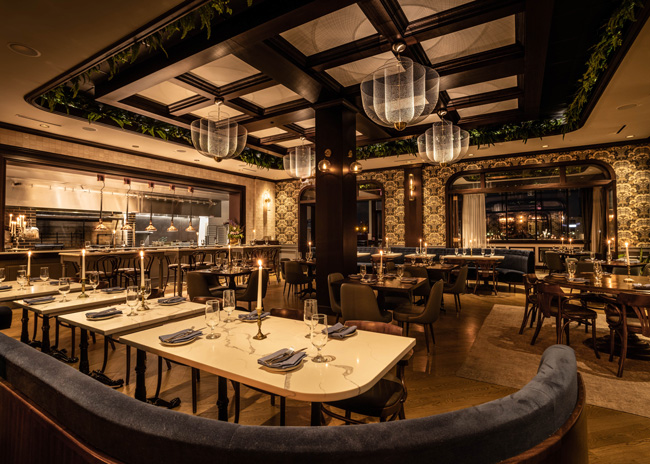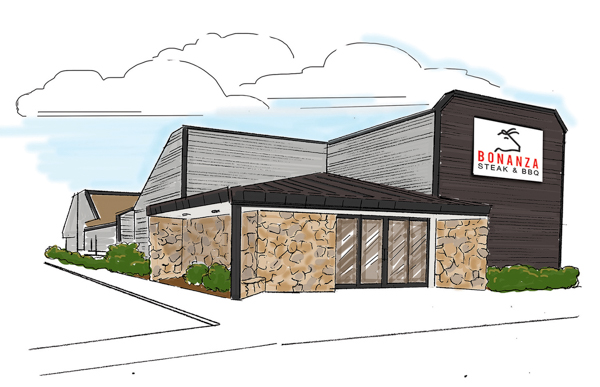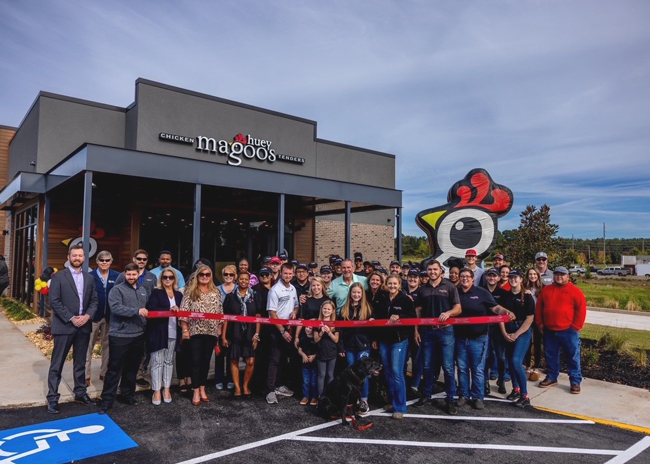 Corey Dunne, co-owner, Dunne-KozlowskiNo longstanding restaurant stays the same for long and dining rooms need to look fresh and up to date. Experts suggest renovations around every seven years, which tends to be when restaurants start to feel a little worn and dated, says Corey Dunne, co-owner, Dunne-Kozlowski, an architecture and design company in Chicago. “You need to account for today but you need to future-proof yourself,” he adds.
Corey Dunne, co-owner, Dunne-KozlowskiNo longstanding restaurant stays the same for long and dining rooms need to look fresh and up to date. Experts suggest renovations around every seven years, which tends to be when restaurants start to feel a little worn and dated, says Corey Dunne, co-owner, Dunne-Kozlowski, an architecture and design company in Chicago. “You need to account for today but you need to future-proof yourself,” he adds.
In order to prevent a full closure, or to keep any closures to a minimum, co-owner Paul Kozlowski suggests designing for flexibility in future renovations. Here are their six best practices for doing that.
1. Think in layers
When Dunne-Kozlowski is developing designs, the designers think in layers, says Dunne. “So your base layer is your infrastructure; we try to stay as neutral with that as it’s the most expensive to change. He suggests keeping the flooring, walls and ceiling neutral — the parts of a restaurant that take a lot of work to change.
The second layer is furniture, lighting, window treatments, and is a little less invasive to change out.
The third layer is the artwork and accessories like vases or planters, the items that really bring a restaurant to life, and the last things that typically go into a space. This is the easiest layer to switch out to inject fresh life to a restaurant.
2. Focus on 30% to 40%
Ideally keep 60% to 70% of your restaurant neutral, with the remainder featuring on-trend elements, Kozlowski says, so when you renovate, you can focus on those areas only.
That means a large part of the restaurant that regulars love remains the same, which is important, Dunne says, “because you want people to still have a familiarity with it; you just want them to feel it’s modernized.”
 Dunne-Kozlowski designed Adalina, a restaurant located in Chicago's Gold Coast neighborhood.
Dunne-Kozlowski designed Adalina, a restaurant located in Chicago's Gold Coast neighborhood.
3. Don't neglect other areas
Bathrooms can be given a quick upgrade by just changing the color of one wall, or changing out the sconces, says Dunne, and women, especially, appreciate a bathroom that's been renovated.
It's fairly simple to bring striking changes to restaurant entrances, says Melissa Grovenburg, Dunne-Kozlowski's managing director. Entrances can be jazzed up with planters, branded or patterned mats and signage such as a small backlit plaque next to the entry, she points out. "For lighting, just changing out existing fixtures and types of lighting can bring a lot of impact to an entrance. Maybe it's including sconces with up/down light sources to help signify the entry."
Outside seating areas are pretty easy to transform, too, she says. "Even just introducing multiple sizes and heights of planters could transform a typical sidewalk patio." Lighting also can play a big role in an exterior refresh, she points out. "Incorporating string lights that just plug into an outlet and battery operated table lamps can quickly create a comfortable atmosphere."
4. Avoid flooring
Flooring is the most difficult thing to renovate so it's best to opt for the longest-lasting type from the get-go. The most durable are traditional tile, terrazzo or stone, says Dunne. A solid wood floor, he says, can be refinished a couple of times so it does come with an expanded life span," he says.
With dining rooms, he explains, you typically want to focus on the center, featuring fixed seating around the perimeter and looser seating in the middle. The traffic aisle between the two should be very durable, whereas the center area, under the chairs and tables — can be a good place for a softer flooring, and can also help with acoustics.
 The Graceful Ordinary, located in St. Charles, Ill.
The Graceful Ordinary, located in St. Charles, Ill.
5. Furniture-focused
Dunne likes to be bold with furniture "because it's front and center," he says." A simple change that can have a big effect is changing the fabric inserts in the backs and seats of chairs, which, he says, “is very forward-thinking and they're easy to change out."
Seats can be upholstered with more durable material like vinyl on the seat, because that gets the most wear and tear and the chair back could be covered in a fabric that has some plushness and warmth because it's "less abused than the seat," Dunne points out.
6. Don't remove the branding
Dunne keeps branding in mind at all times, "and what the customers expect from their interactions the restaurant." If he's doing that properly, he explains, "you're going to minimize the likelihood of removing an element customers are attracted to. "Branding touchpoints might include a photo of nonna in a family Italian restaurant or family plates on the wall of a Mexican eatery.



